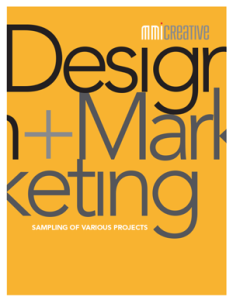When it comes to email and getting people to read it, content is everything. To help you develop better email newsletter content, here is a short list of 5 email newsletter dont’s. The background information for this list comes from the website of Emma (myemma.com) – an online email and newsletter service. The following are things to avoid, not hard-and-fast rules. Think of these as suggestions that will help you layout and send newsletters that people on your mailing list will enjoy and even look forward to getting.
1. AVOID using a generic subject line.
You know that your latest email newsletter is the June Newsletter. And you know that it’s great. But it’s up to you to tell your contacts just WHY your June mailing is so smashing special. Consider using your subject line to tease your headline article, a special sale, or whatever you decide is the most enticing part of your newsletter. You’ll also want to still include your branding in the subject line so people will instantly recognize your email at a glance.
Here’s an example of an engaging subject line: All Seasons Nursery June News: Get your annual flats while they last – Only $10 per flat!
2. AVOID using lots of colors and hard-to-read fonts.
Sometimes we all get carried away with using lots of fonts, highlighting colors, decorative boarders, pictures – whew, I’m spinning just thinking about it. The old “KIS” adage (keep it simple) works best for newsletters. To make it engaging and easy on the eye for your readers, limit your fonts to no more than 2 or 3 and be consistent in their usage. Perhaps a more decorative or heavier font for headlines and an easy-to-read font for the body text.
The same goes for color usage. Stick with the colors you use in your branding and keep those to only 2 or 3 colors also. As far as pictures go, work to keep a even balance of pictures and text in your overall layout.
3. AVOID sending to people who didn’t ask for it.
While it’s important to make sure your email looks great, a successful mailing really starts with a solid, permission-based list. Only email people who have asked to receive your updates, bought something from you in the last 18 months or are directly affiliated with your organization. If it’s a rented list, a purchased list or a list of people who’ve never heard of you, avoid it. Like the plague.
On the same note, since permission-based email marketing is all about staying in touch with your members and customers, giving your recipients a way to continue the conversation is a must. Otherwise, you’ll miss the follow-up questions from your customers, not to mention those rare (but important!) unsubscribe requests from people who choose to reply to you instead of using the built-in opt-out link. If the from address you’re currently using doesn’t exist, it’s best to change it to an address that does exist and is monitored by someone who can manage the replies.
4. AVOID sending a novel.
When you send a mailing that goes on and on (and on), a typical subscriber — with a typically short attention span — probably won’t sift through lots of text to find the content that interests them. Instead, your recipients may delete your email at a glance or even file your email in the dreaded “to read later” folder.
Consider teasing your news articles with a quick text blurb in your email newsletter, then use landing pages to link your subscribers to additional content hosted on your website. In addition to shortening the length of your mailing, you also get the benefit of seeing which articles people click through to read — and you’ll end up learning more about what your readers are interested in.
5. AVOID sending too often (or not enough).
Finding your ideal frequency depends on a few factors, like what your organization does and who you send to. Just keep in mind that sending too frequently may annoy your readers and increase your opt-out rate, but long lapses of silence may cause some readers to just plain forget about you. Aim for regular contact that keeps your brand and product in front of your readers, and make sure each send-off has a purpose. In general, we recommend staying in front of your audience at least once a month, but perhaps not more than once a week.


